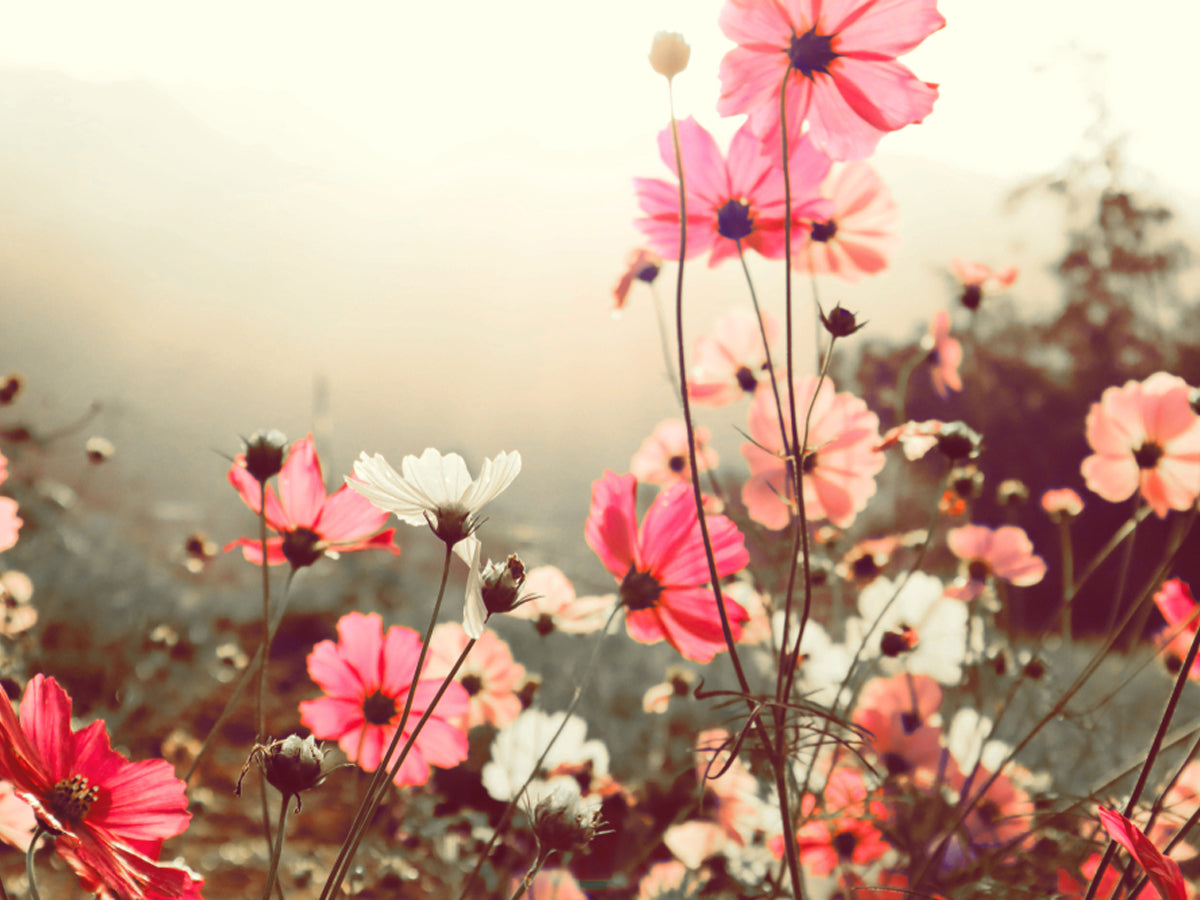How to Grow
Is Nature Humming "Rang De Basanti" through These Spring Season Flowers?
“love is in the breeze and longing is in the eyes….someone called to say that spring has arrived”
The approximate translation provided above is from a classic Bengali song honoring the onset of spring.
If you feel both hot and cold and are confused about whether to pack the blankets or turn on the fan, be sure that spring is here.
Barring this discord, it is pleasant weather outside, perfect for outdoor activities. To be more accurate, spring is the transition period from winter to summer.
So, what makes spring so special?
It’s the flowers. Spring without its vivacious flowers is like tea without ginger, Diwali without sweets, or Christmas without cakes!
It feels like a makeup artist did everything right to deck up nature to celebrate life on earth again. People call spring the season of love, rebirth, and fresh beginnings because of the abundance of flowers and foliage.
The most beautiful springtime flowers that we see in India will be covered in this blog. We will talk about the following:
- What does the spring season look like in India?
- List of spring season flowers in India
Let’s start then.
What does the Spring Season Look Like in India?
The spring season is frequently distinguished by pleasant weather devoid of freezing temperatures or scorching heat. Maybe for this reason, the spring season is known as the “king of seasons." In Hindi, it is called “Vasant Ritu.” From mid-February to mid-April, India experiences the spring season. Some of the salient features of this season are mentioned below: -
- Trees and plants begin to sprout new leaves and flowers, making the landscape lush and colorful.
- The maximum average temperature is around 32 degrees Celsius.
- As the earth’s axis increases its tilt towards the sun, we experience shorter nights and longer days.
- The festival of Holi, also known as the “Festival of Colors," is celebrated during this season, usually in March. This is one of the most well-known Indian festivals that celebrate the season with bright colors everywhere.
- Other popular festivals during spring in India include Mahashivratri, Rama Navami, and Bihu.
- Farmers begin to prepare their fields for the upcoming harvest season, making it a busy time for agriculture.
- It is a popular time for outdoor activities, such as picnics, nature walks, and sports.
- Spring also marks the end of the peak tourism season in India, making it a good time for travelers to visit without encountering large crowds.
- After the cold weather, when the temperature starts to rise again, it is time for flowers to bloom again. That’s why you will see numerous birds, bees, and butterflies in your garden.
- For the emergence of flora and the celebration of regional New Year's nationwide, spring is often symbolized by rebirth, rejuvenation, transformation, new beginnings, change, warmth, optimism, and love.
List of Spring Flowers in India
The spring season is all about bright, colorful flowers. Celebrate the vibrancy in the air by bringing home these seasonal flowers: -
Daffodil
Daffodils are perhaps the most popular of all spring flowers. This bulbous flower is native to the Mediterranean region. People love these yellow trumpet-shaped flowers that herald the arrival of the spring season. They symbolize new beginnings, hope, and rebirth.
Care Tips
- Daffodils prefer frequent spring and fall watering. But once the blossoms have faded for three to four weeks in the middle to late spring, cease watering.
- They do best in rich, moist soil with a pH between 6.0 and 7.0.
- Daffodils can tolerate some partial shadow or dappled light, but they do best when planted in full sun – for at least six hours per day.
Gerbera Daisy
Gerbera daisies are popular for their bright and vibrant colors, ranging from reds and yellows to pinks and oranges. They are native to South Africa and were named after Traugott Gerber, a German botanist. These flowers have large, round blooms with a center disk surrounded by a ring of petals and are used profusely in bouquets and arrangements.
Care Tips
- Gerberas love the full sun but the scorching rays of the sun are harmful to them. So, offer some shade in the afternoon when the sun is mercilessly hot.
- Rich, well-draining, organic soil with a pH between 5.5 and 6.5 is perfect for growing gerbera daisies.
- Check the dryness of the soil before watering. However, one inch of water per week is great for this plant.
Lilac
Lilac flowers are small, fragrant blooms commonly available in shades of purple. However, they are also available in white, pink, and blue shades. These flowers are indigenous to Europe and Asia. Often used as an ornamental garden plant, these flowers are heavily used in the manufacturing of soaps and perfumes.
Care Tips
- Rich loamy soil with a good drainage system and a pH between 6.5 and 7.0 is ideal for growing lilac plants.
- Lilacs struggle in full shade. They require at least six hours of direct sunlight per day. Some shade is also welcome.
- Young lilacs need regular watering because they grow best in damp soil. As the plant matures, water it only during dry spells.
Magnolia
Magnolia flowers are renowned for their beauty and elegance. This genus includes over 200 species of flowering plants, known for their large, showy blooms in shades of pink, white, and yellow. Magnolia is often used in bouquets and as home decor due to its unique appearance and sweet fragrance.
Care Tips
- If you have chosen evergreen magnolias, they will require full sun, and for deciduous magnolias, partial shade is ideal.
- Magnolias love moist, well-drained soil rich in organic matter with a pH between 5.5 and 6.5.
- Younger trees will require more water than mature ones.
Pansy
Pansy flowers are a popular garden plant known for their colorful blooms and heart-shaped petals. These flowers are part of the viola family and come in a variety of colors, such as purple, yellow, white, and blue. Their beauty and hardiness make them beloved flowers for gardens and landscapes around the world.
Care Tips
- The partial shade suits this flowering plant the most.
- Loose-rich soil with a pH between 6.0 and 6.2 is ideal for pansies.
- It requires regular watering, but remember not to make the soil soggy; otherwise, it will harm the plant.
Ranunculus
Ranunculus flowers are also known as buttercups. These delicate, bright flowers are native to Asia, Europe, and North America. Commonly seen in gardens, floral arrangements, and wedding bouquets, these flowers come in white, pink, red, orange, yellow, and purple colors.
Care Tips
- Sandy or loamy soil with good drainage and a pH between 6.0 and 6.5 is ideal for buttercups.
- Water only when the soil starts to dry out since once the plants are established, they like a moderately moist soil environment.
- For the best blooms, offer full sunlight to ranunculus plants for at least six hours.
Rhododendron
Rhododendron flowers bloom in clusters and come in a range of colors like pink, purple, white, and red. They are known for their large, showy flowers that can measure up to 20 cm in diameter. Some species of Rhododendron have medicinal properties and are used in traditional medicine to treat a variety of ailments.
Care Tips
- These shrubs require six hours of sunlight daily. Select a place that receives afternoon shade if you reside in the warmest portion of their growing zones.
- The ideal soil for rhododendrons is well-drained and wet, with a pH between 4.5 and 6.0.
- Throughout the growing season, rhododendrons require watering twice every week, but once they mature, water only during dry spells.
Rose
Roses are highly valued for their beauty and fragrance. They are widely recognized as a symbol of love and romance. Roses are used in a variety of ways, including as cut flowers, in perfumes and cosmetics, and as a key ingredient in traditional medicines.
Care Tips
- Six hours of daily sunlight are essential for rose shrubs. Roses also benefit from afternoon shade.
- The ideal soil for roses is loamy, well-drained, and between pH 6.5 and 6.8.
- It is best to thoroughly water roses twice a week.
Sweet Pea
Sweet pea plants are native to the Mediterranean. These flowers come in a wide range of hues, including white, pink, purple, and red, and they bloom from late spring to early summer. Sweet pea flowers have been used in traditional medicine to treat various ailments due to their anti-inflammatory and anti-cancer properties.
Care Tips
- During the growing season, watering every week is essential. As the plant matures, water when the soil becomes dry.
- Full sun with afternoon shade, especially when the area receives scorching sunlight, is ideal for growing sweet peas.
- Rich, well-draining soil with a pH between 7.0 and 7.5 is perfect for sweet peas.
Tulip
Tulips are a popular springtime flower that symbolizes love, passion, and loyalty. With over 150 species, tulips are known for their bright colors, distinctive shape, and variety of sizes. They are cultivated for their beauty and ornamental value.
Care Tips
- Rich, well-draining soil with a pH between 6.0 and 7.0 is ideal for tulip growth.
- Tulips grow best in full sunlight for at least six hours.
- After planting the bulbs, provide adequate water. After that, save additional watering for prolonged dry periods. In arid regions, watering every two weeks is suggested.
Aren't you excited to bring some spring flowers home? Prepare a list of flowering plants and celebrate this season with some of these happy blooms.
Happy gardening!
FAQ’s About Spring Flowers
Which spring flower can be grown at home easily?
You can grow these spring flowers at home easily – pansy, sweet pea, daffodil, lilac, petunia, zinnia, etc.
Where to visit in India to see the most beautiful spring flowers
You can witness some of the most breath-taking floral views of the spring season in these places – Kaas Pathar in Maharashtra, the Valley of Flowers in Uttarakhand, Munnar in Kerala, Dzukou Valley in Nagaland, and Yumthang Valley in Sikkim.
Is it necessary to cut back spring flowers?
The type of flower and the growing circumstances determine whether or not to prune spring flowers. Certain spring plants, like tulips and daffodils, are bulbs whose foliage should be left in place until it turns brown and dies back naturally. This enables the plant to conserve energy for the bloom the following year. On the other hand, other perennials and annuals like pansies may benefit from pruning as that lengthens the blooming season.
Do spring flowers return every year?
Some spring-flowering plants are annuals, which live for just one growing season before dying, while others are perennials, which bloom once and then die each year. If you grow spring flowers like daffodils, crocus (kesar), tulips, iris, or hyacinths, they will bloom year after year after going dormant in winter. But annuals like pansies or petunias grow and die in the same year.
How much water do spring flowering plants require?
The amount of water required by spring flowering plants depends on the type of the plant, growing conditions, and climate. For instance, annual plants like petunias or pansies typically need more water than bulbs like tulips and daffodils. So, you must learn the particular watering requirements of the plant variety you have and modify your watering schedule accordingly.



